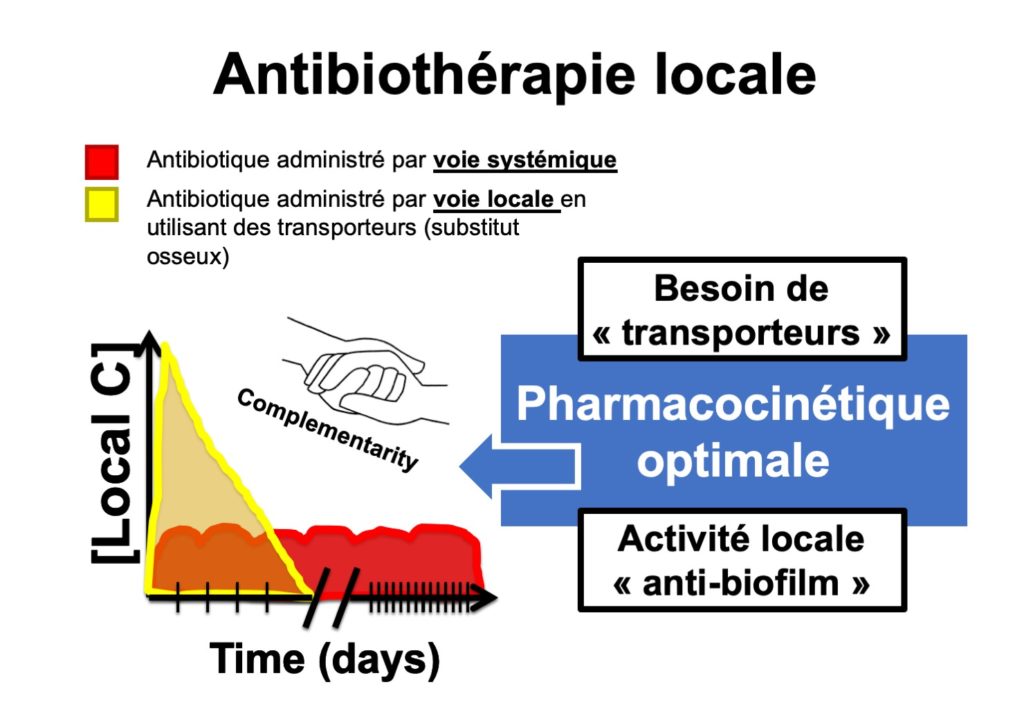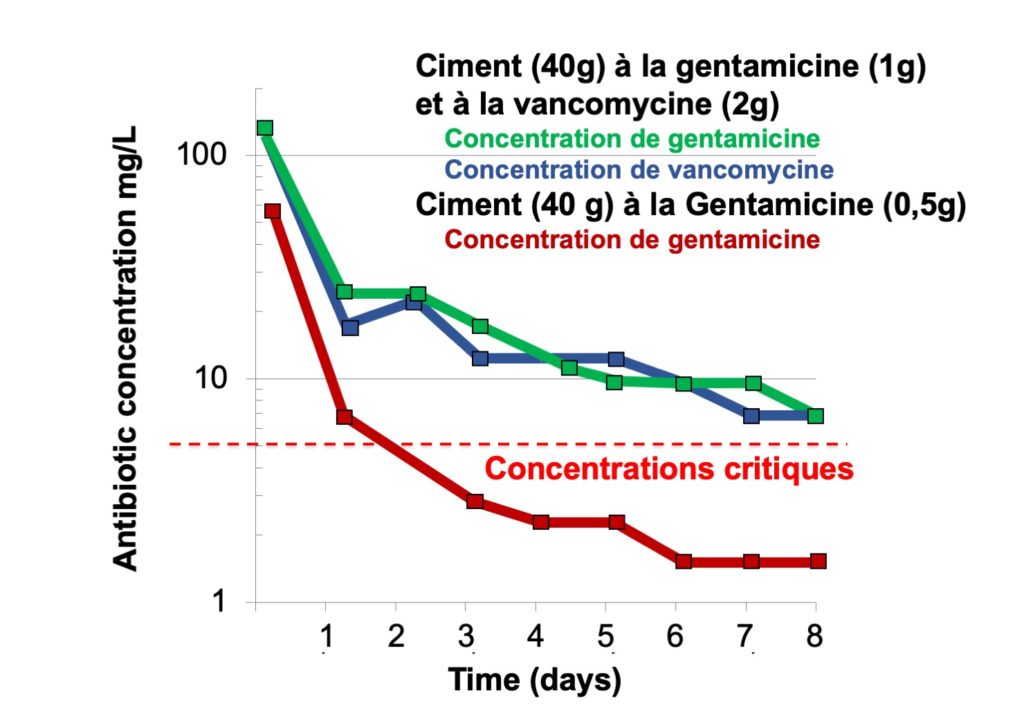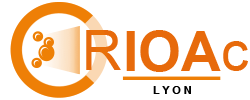Principle of local antibiotic therapy

Principle of antibiotic-loaded cements
Bone cements are devices widely used in orthopaedics. They are made of polymethyl methacrylate (PMMA) and have been used for decades for prosthesis fixation and to improve its integration within the bone of the patient.
Since the cement is a foreign body, it must be removed when the prosthesis is changed. In recent years, some manufacturers have added antibiotics such as gentamicin, vancomycin or clindamycin to the composition of their cement. These antibiotics are stable in this cement and are diffused in high concentration over several weeks.
The use of antibiotic-loaded cements is quite frequent during a change of prosthesis. These cements are used as « spacers » in septic pseudarthrosis, to temporarily fill a loss of substance with bone graft.

Example of pharmacokinetics (in red) from gentamicin released by antibiotic-loaded bone cement. Local concentrations are extremely high initially (logarithmic scale) then decrease over time. In green and blue, the respective pharmacokinetics of gentamicin and vancomycin released by an innovative cement containing these two antibiotics, with very high initial concentrations, far above bactericidal concentrations, lasting for several days.


